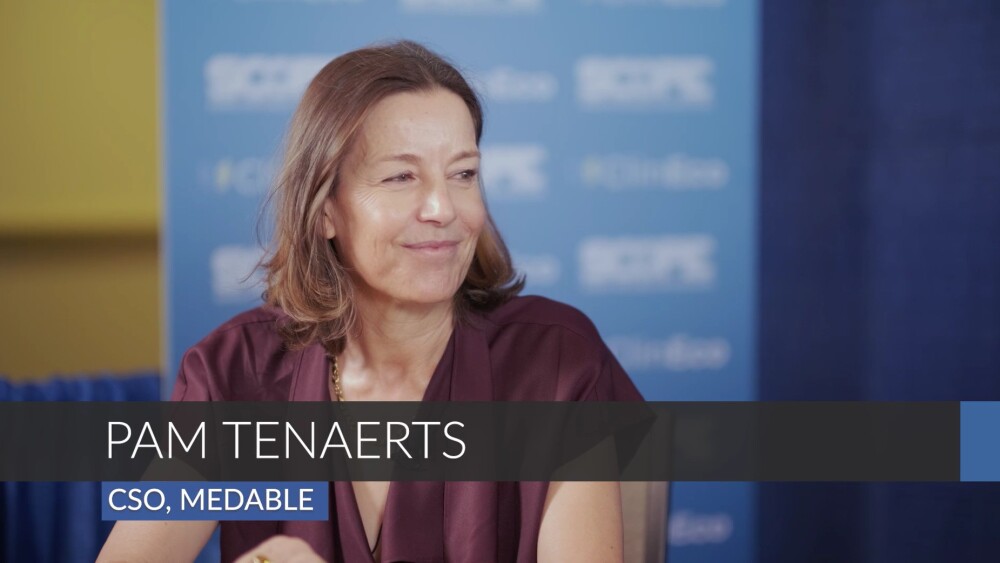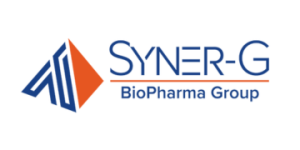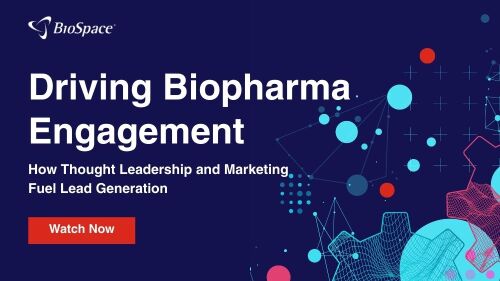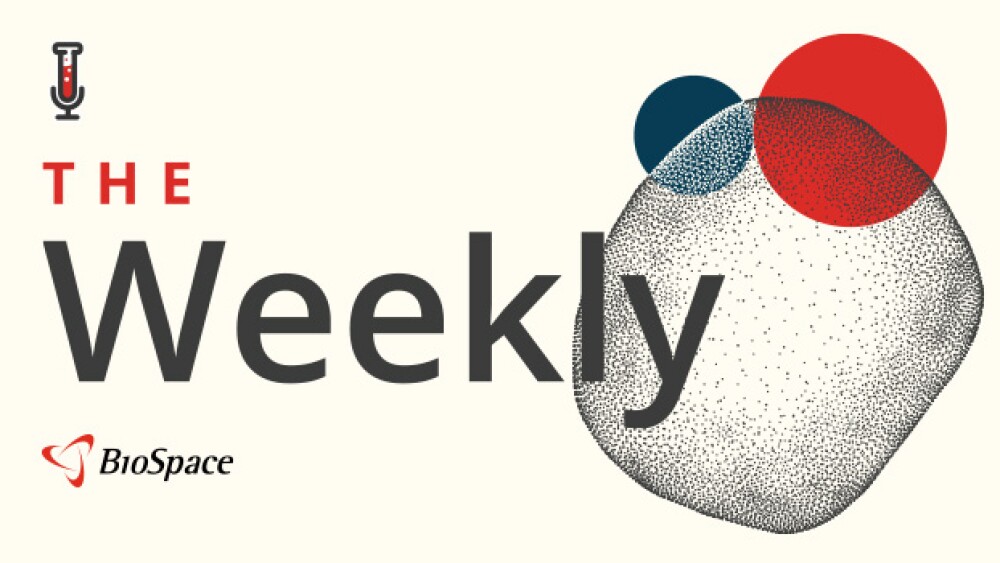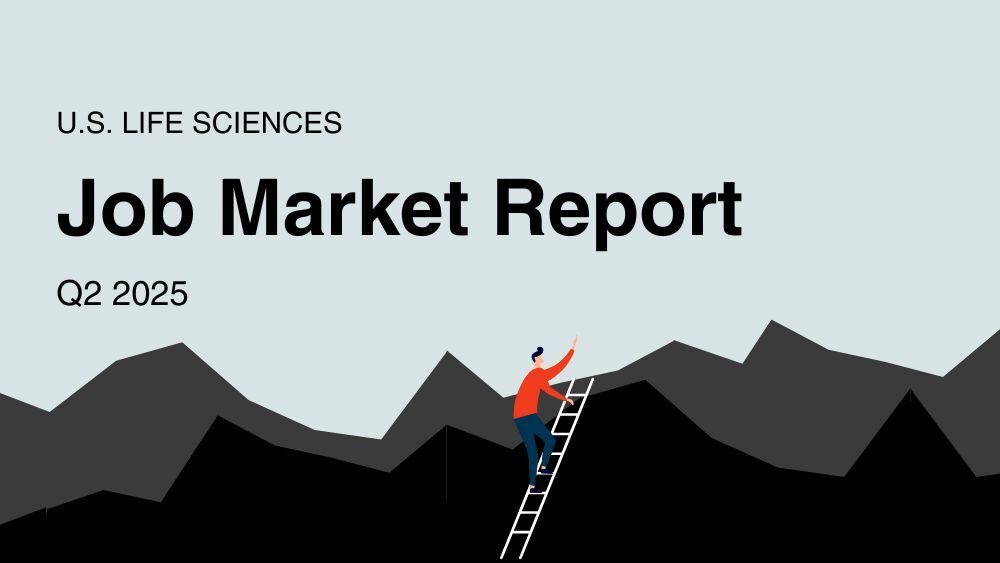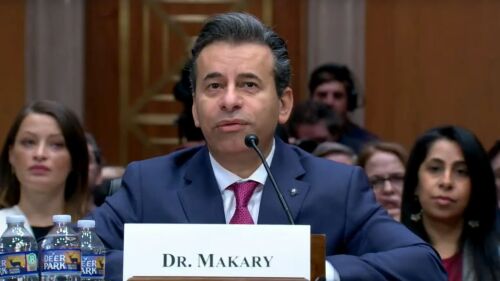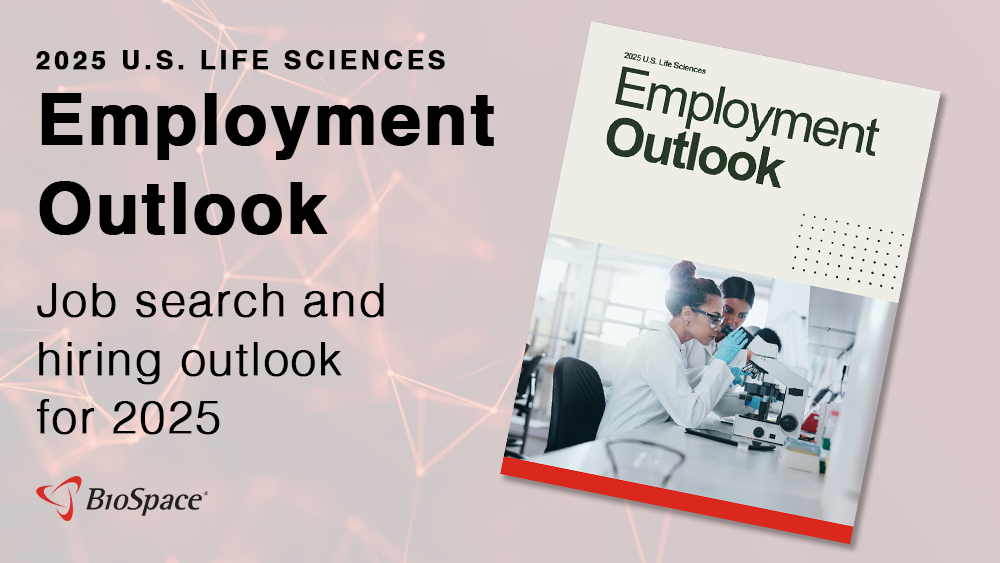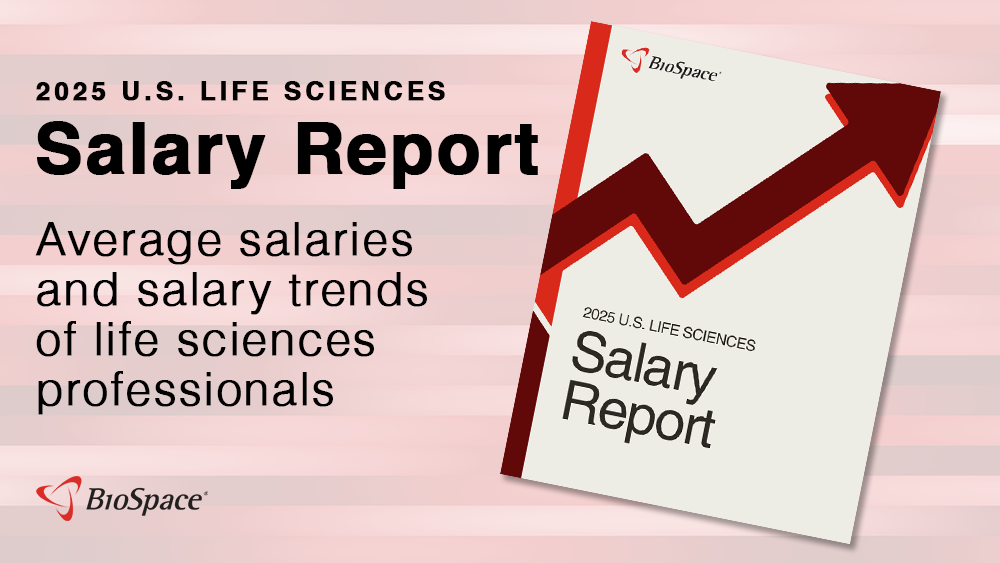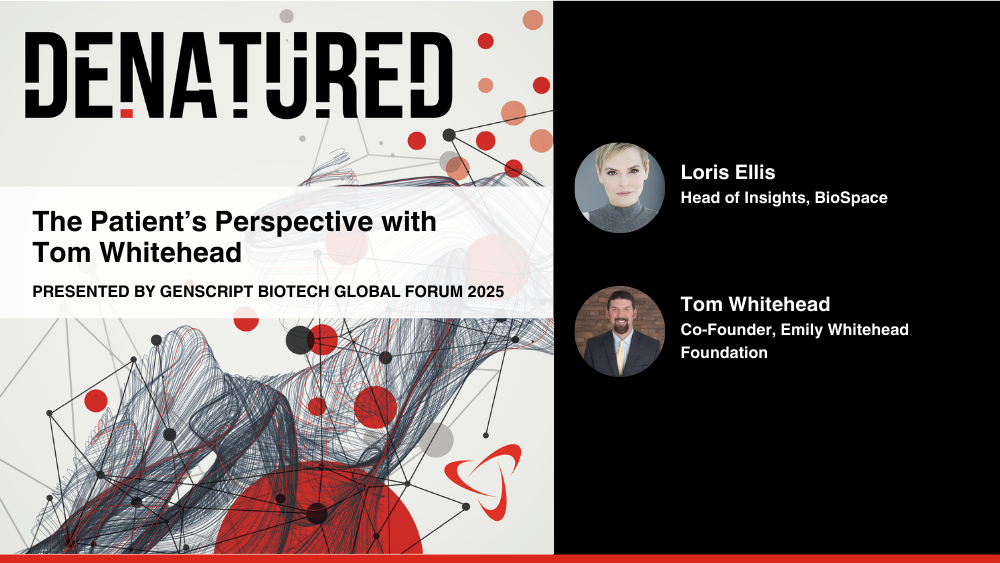Eli Lilly’s orforglipron cut body weight to a lesser extent than rival Novo Nordisk’s semaglutide, falling into analysts’ bear scenario for the oral med. Executives brushed off the concerns and said the drug will still have a wide advantage on the market.
Sarepta did not hold an investor call for its second-quarter earnings report or provide an updated full-year revenue outlook.
In this episode presented by Cresset, BioSpace’s head of insights Lori Ellis discusses the emerging geopolitical battle for AI supremacy and global AI governance with Mutlu Dogruel, VP of AI and Mark Mackey, CSO of Cresset.
The small molecule drug, acquired by Jazz Pharmaceuticals in its $935 million Chimerix pick-up this spring, is intended for relapsed adult and pediatric patients with H3 K27M mutations.
The German giant has already trimmed more than 10,000 employees since initiating a massive restructuring initiative in July 2023. Bayer said even more cuts are coming as it weathers up-and-down sales across its portfolio.
Terns, once a rising star in obesity and the MASH space, will refocus on cancer and partner out a handful of obesity assets.
FEATURED STORIES
As high prices and supply issues drive consumers to alternative markets for GLP-1s, physicians aren’t too interested in using these therapies to treat conditions like heart disease risk that have existing cheap standards of care.
SpringWorks Therapeutics sprung out of Pfizer’s storeroom, when a rare disease advocacy group pushed to keep a program for neurofibromatosis alive. This method could work for “every rare disease under the sun,” advocates say.
SpringWorks Therapeutics is the perfect case study for rescuing a discontinued assets. It’s time to repeat the process for every rare disease, experts say.
The industry remains unwavering in the commitment to increased clinical trial accessibility and representation.
Price-negotiation provisions that are out of step with reality are discouraging funders and Big Pharma partners from investing in potentially transformative therapies. Fixing some of the unintended consequences of the IRA will clear the way for innovative medicines to reach patients in need.
Non-opioid pain therapies are entering an unprecedented era, marked by the landmark FDA approval of Vertex’s Journavx and a growing number of alternative approaches. Their ultimate uptake, however, remains to be seen.
LATEST PODCASTS
Eli Lilly becomes the latest to make a major investment in immunology and inflammation, while antibody-drug conjugate biopharma Myricx Bio nets a large Series A round and new research highlights the potential and possible risks of GLP-1s.
Two CRLs from the FDA last week cited concerns with third-party manufacturers, while Indian CDMOs may make a bid for U.S. business if there is a decoupling from Chinese companies under the BIOSECURE Act.
This week on Denatured, Head of Insights Lori Ellis and guests discuss the implications of not addressing the DE&I data gaps for the future.
Job Trends
Johnson & Johnson (NYSE: JNJ) announced today it has entered into a definitive agreement with Numab Therapeutics to acquire from Numab’s shareholders its wholly-owned subsidiary for the global rights to a novel, investigational first-in-class bispecific antibody, NM26, in an all-cash transaction of approximately $1.25 billion.
Subscribe to Genepool
Subscribe to BioSpace’s flagship publication including top headlines, special editions and life sciences’ most important breaking news
SPECIAL EDITIONS
In this deep dive, BioSpace explores the next big thing in obesity.
BioSpace did a deep dive into biopharma female executives who navigated difficult markets to lead their companies to high-value exits.
BioSpace data show biopharma professionals faced increased competition for fewer employment opportunities during the second quarter of 2025, with increased pressure from further layoffs.
DEALS
-
Sangamo and Pfizer’s hemophilia A gene therapy candidate scored a Phase III victory last week. However, with the genomic medicine company soon to run out of cash, Sangamo’s short-term prospects look bleak but not unsalvageable, analysts say.
-
Under the deal announced Monday with the California biotech, German pharma Boehringer Ingelheim is gaining access to novel immune checkpoint inhibitors designed to activate the immune system to fight cancer cells.
-
A longtime biopharma exec and Moderna shareholder argues in an anonymous email to the companies’ CFOs that they have a fiduciary responsibility to close the deal. Analysts say the proposal is interesting but “too simplistic.”
-
While supportive of Amylyx’s acquisition of a GLP-1 drug, analysts say the company’s future hinges on key upcoming readouts from multiple products in its pipeline.
-
The acquisition of the contract development and manufacturing organization will allow Agilent Technologies to provide a one-stop source for gene-editing services for its customers.
WEIGHT LOSS
-
Eli Lilly is aggressively ramping up its manufacturing capacity for tirzepatide as compounding pharmacies continue to challenge an FDA decision to formally end the shortage of the obesity and diabetes drug.
-
In recent months Novo Nordisk has invested several billions of dollars to boost its manufacturing capacity—including its highly contested $16.5 billion merger with CDMO giant Catalent.
-
The Danish startup, whose lead candidate has parallels to Amgen’s MariTide, launches on the heels of Amgen’s Phase II data release for the drug last week.
-
SURMOUNT-5’s results reflect those of multiple real-world studies, which have found that tirzepatide treatment results in stronger weight loss than semaglutide.
-
Amylin analogs present a strong alternative or complement to GLP-1 receptor agonists, potentially eliciting higher-quality weight loss with a cleaner tolerability profile.
POLICY
-
FDA Commissioner Marty Makary last week announced a directive that would limit industry participation in the agency’s advisory committees. But not only do company reps serve only as non-voting members, a 1997 law actually requires industry involvement.
-
Disruptive conditions are typical in non-Western markets. The U.S. industry, thrown into a period of significant change as the Trump administration overhauls HHS and considers implementing tariffs, could learn a thing or two by looking overseas.
-
In an interview with former Fox News journalist Megyn Kelly, FDA Commissioner Marty Makary introduced a new mechanism-driven pathway that could be leveraged by rare disease therapies while saying that autism could potentially be driven by certain environmental factors.
-
Losing the FDA’s senior negotiators would slow the renewal of the user fee programs “considerably,” according to policy and regulatory expert Steven Grossman.
-
Industry representatives will still be allowed at these meetings, but they will no longer have a spot on the advisory committee.
Just because everyone around you seems to be switching to a work-from-home position does not mean it is the right decision for you. It’s important to weigh the options carefully before you decide.
Finding the most cost-effective school for your undergraduate pharmaceutical degree can allow you to start working in the field without incurring astronomical student debt.
Peer review is integral to the scientific process, and one group plays a bigger role than you might think: Scientific Review Officers.
Take a look at which states pay the highest and lowest salaries for pharmacists and how that pay compares to the cost of living.
From research to sales and marketing, the pharma industry has a wide range of employment opportunities to accommodate those looking for a chance to work in the field.
A life science degree can provide various academic and professional opportunities to you. Here’s an overview of what you can do with a life science degree.
HOTBEDS
REPORTS
In this Employment Outlook report, BioSpace explores current workforce sentiment, job activity trends and the prospective job and hiring outlook for 2025, particularly as it compares to the previous year.
BioSpace’s third report on diversity, equity, inclusion and belonging in life sciences examines dramatic shifts in attitude around diversity initiatives.
CANCER
-
In this episode, presented by the Genscript Biotech Global Forum 2025, BioSpace’s Head of Insights Lori Ellis talks to Tom Whitehead, co-founder of the Emily Whitehead Foundation, about how standard care, cell and gene therapies and their impact on patients.
-
The layoffs follow an announcement in early January that I-Mab will re-prioritize resources to focus on advancing a CLDN18.2 and 4-1BB bispecific antibody for gastric cancers.
-
The move is part of a strategic restructuring aimed at getting azenosertib to the market for patients with gynecological malignancies.
-
Enhertu’s label expansion comes on the heels of the FDA’s approval of the partners’ Datroway for a related type of breast cancer.
-
Bristol Myers Squibb’s Opdivo plus Yervoy, as well as Pfizer’s Braftovi, have each shown strong Phase III performances that could position them as new standards of care in certain subtypes of metastatic colorectal cancer.
NEUROSCIENCE
-
Already established as cornerstone therapies in diabetes and obesity, GLP-1 receptor agonists also show potential in several other indications, including cancer, addiction and neurodegenerative diseases.
-
BioArctic received $100 million upfront with another $1.25 billion in potential milestone payments on the line for two pyroglutamate-amyloid-beta antibodies.
-
The report comes just two days after Novartis announced its own Parkinson’s drug failure.
-
Some 90% of investigational drugs fail—and success rates are even more dire in the neuro space. Here, BioSpace looks at five clinical trial flops that stole headlines over the past 12 months.
-
Even as Biogen and Eisai’s Leqembi and Eli Lilly’s Kisunla slowly roll out onto the market, experts question the efficacy of these anti-amyloid antibodies and the amyloid hypothesis overall.
CELL AND GENE THERAPY
-
The biotech beat Wall Street’s third-quarter revenue forecast by 6%, driven by increased uptake of its achondroplasia drug Voxzogo. However, William Blair downgraded BioMarin’s shares to market perform due to a “lack of near-term catalysts” and uncertainty around Voxzogo’s potential revenue growth.
-
With Sarepta’s gene therapy Elevidys now available to a majority of Duchenne muscular dystrophy patients, experts express cautious optimism while emphasizing the need for further data.
-
With an upfront payment of $50 million from Roche, the partnership will leverage Dyno Therapeutics’ in vivo gene therapy delivery technology, which synthesizes virus capsids with better functionality and manufacturability.
-
While ex vivo genome editing results in highly effective cell therapies, it can lead to off-target effects. Caribou Biosciences has come up with a novel approach for potentially more precise gene editing compared to all-RNA guides.
-
The pediatric patients, with a rare neurodegenerative disease, were treated with bluebird bio’s Skysona to slow the progression of neurologic dysfunction. Six patients developed myelodysplastic syndrome and one patient developed acute myeloid leukemia.













